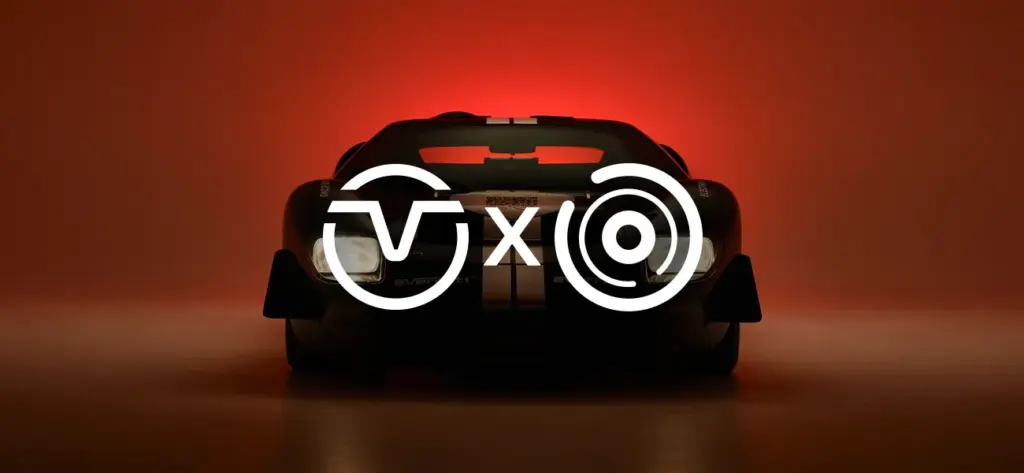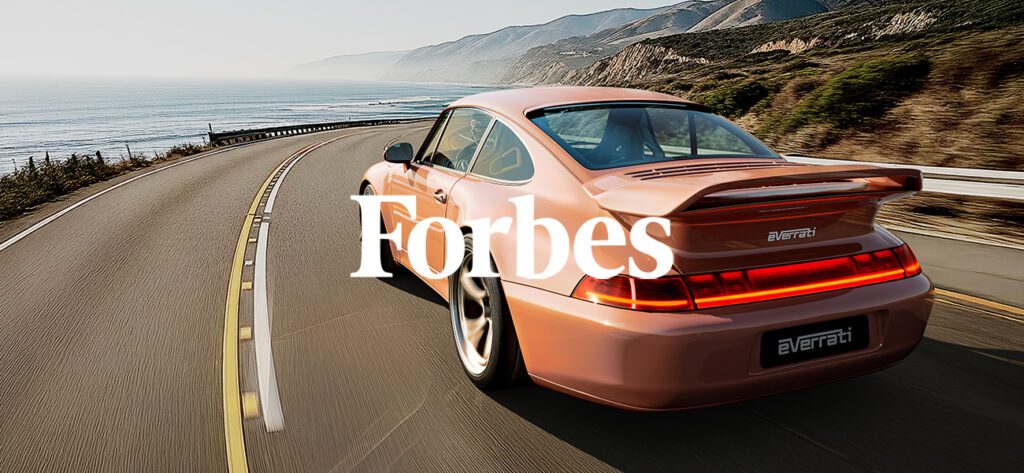Everrati boss Justin Lunny was behind the wheel of an electrified AC Cobra, following the owner of a rorty original 428 along the California coast, when the small Cobra convoy pulled over.
“The driver says he can’t go any further, because not only is it a low emission zone, but it’s a noise zone and they’re pulling over and impounding cars for making too much noise,” says Lunny. “So that’s another thing that people are now confronted with—it’s not just tailpipe emissions, but noise pollution. In London, drivers are being pulled over for too much sound and in Switzerland right now there are major limits on noise.”
Lunny is talking to Hagerty in the serene surroundings of a Polo club in Ascot, just outside London, where he is showing off Everrati’s latest Series IIA Land Rover Redefined. But before we get into the details of that, let’s direct our focus back to California where Everrati is about to commence building its first cars.
We previously sampled Everrati’s 964-era Porsche and appreciated the lengths the British startup had gone to retain the feel of the original car, despite doing away with its signature flat-six engine. Lunny reports that about one third of enquiries have been coming from the U.S., so partnering with local specialists to build cars Stateside was a no-brainer. Everrati’s technology has been designed to be installed without cutting into the original classic and is, in theory, completely reversible. That means that detailed restoration to individual customer requirements can be done by marque experts, while Everrati personnel can oversee the installation of the electric powertrain and ancillary systems.
Having developed a rear-engine replacement for the 911, the next iterations along the way are for four-wheel-drive applications, as demonstrated by the Series IIA (be patient, we will get there soon). Also in the pipeline is a mid-engined system for the Superperformance GT40 and a front-engine-rear-drive replacement to be first fitted to a Mercedes-Benz Pagoda. With that skillset and experience in hand, the company should be able to tackle almost any car a customer desires.
“I think there’ll be probably a muscle car of some description, like a Mustang at some point,” says Lunny. “Now, okay, you could argue that GM and Ford already have crate motors, but the engineering that we’ll do is very different when it comes to the to the vehicle itself. We don’t just do the drivetrain, we redefined the whole car, which, I think is probably what sets us apart and hopefully the quality speaks for itself. Something like a Willys Jeep could be an option and when we were in Los Angeles last time a dealer who would like to work with us said, ‘Why don’t we buy up a load of Humvees?’”
That’s not the most ridiculous suggestion that Everrati has fielded from customers, mind you. Among the most bizarre requests for electrification that have been put forward include the Porsche 959 and Carrera GT, as well as a Mercedes 300SL Gullwing. “Although once you’ve done a Pagoda, the architecture has a lot of similarities,” muses Lunny.
So far, Everrati has turned down these and other seven-figure requests to focus on developing its own portfolio of redefined classics.
The first Everrati to be delivered to a U.S. customer will be a 911. The buyer, a California tech millionaire in his thirties, had fond memories of riding in the back seat of his dad’s Porsche when he was a child. Now as an adult, he says he will only drive an electric vehicle, so the Everrati is perfect.
Lunny says that this year he expects the sales split to be roughly 50-50 between the Porsche and the Land Rover. So we’d better find out what it’s like (thanks for waiting).
In a word, “charming”. First impressions are of a beautifully-presented, ground-up restoration. There’s nothing to outwardly suggest this is anything other than an early Sixties Landie that’s been given a carefully considered restomod nod. The first customer car, in a stunning sand color, features an immaculately-trimmed leather interior with teak decking in the rear laid by a boat-builder, and an artfully integrated modern audio and climate control system.
Honestly, this is OEM-quality stuff and far beyond what the British Leyland-run Land Rover would have delivered in the 1960s. As for those concerned that a much-loved British classic has been somehow lost in the conversion, Lunny reassures us that the donor car was “a complete basket case. It was in a garden with plants growing out of it.”
Understandably this $200,000-before options customer car is for display only, so it’s Everrati’s development vehicle that I’m allowed in for a brief test drive.
Inside there’s an array of additional warning lights, but the standard of trim is every bit as good as the customer car. Original gauges have been repurposed to EV-related items such as state of battery charge, so otherwise all as basic and original as one would hope. The big steering wheel is unassisted on this demonstrator but customer cars will all have PAS as standard.
On the mechanical side, as well as losing the 2.25-liter four-cylinder gasoline engine, the original four-speed manual transmission is nowhere to be found. Instead the electric motor drives straight into the transfer case. That means the car’s low-range and diff-lock features are retained, so the Everrati Landie should be every bit as capable off-road as the original. Probably even more so thanks more than twice the power and torque (152 hp and 221 lb-ft) on tap.
On the road, Everrati’s Rover possesses an off-the-line punch that no Series IIA owner is likely to have ever experienced. That maximum torque at zero revs makes for a machine that’s far more capable of keeping up with modern traffic. Of course, it’s still a leaf-sprung Land Rover, so you’ll have to be pretty brave to hustle it along at any great speed. As with the 911, Everrati has made a point of preserving the car’s overall dynamics so that it retains its original character. The goal is a car that feels familiar aside from the powertrain.
Motor whine replaces the rattle of the old four-cylinder. Your left leg is spared the pumping of a heavy clutch, meaning you can now keep both hands on the wheel and concentrate on the slightly meandering steering instead of battling the transmission.
I definitely understand the certain masochistic pleasure in succeeding to make grumpy old cars go well (I drive a Lotus Esprit) but objectively the Everrati transformation succeeds in making the Series IIA a far nicer car to putter around in. You won’t be able to putter that far, with a claimed range of 125 miles from its 60kWh battery pack, but you’d have to be seriously hardcore to want to travel farther. Even with a gas engine, more than 125 miles in a classic Landie is a physically demanding affair.
The truth is that Everrati expects most of its Series IIAs to be used in cities or as transport for guests at cool Californian vineyards or other hospitality situations. That first customer car? It’s destined for life on the school run in central London where the furthest off-road it will get will be a spot of pavement parking. There will be many reading this who disapprove, not just of that use case, but of the whole idea of electrifying old cars. However, I believe that anything that extends the lives of classic cars is worth encouragomg and that Everrati’s approach is both sensitive and expertly executed. America should be excited about Everrati’s arrival.
Source: Hagerty






